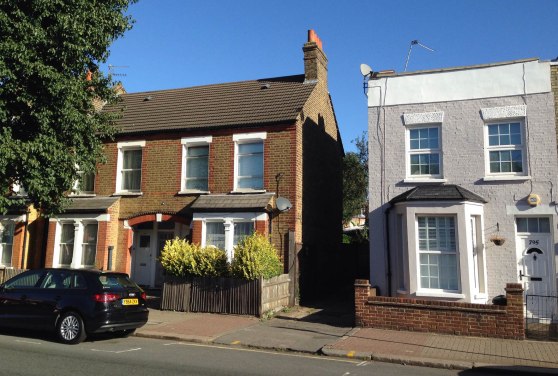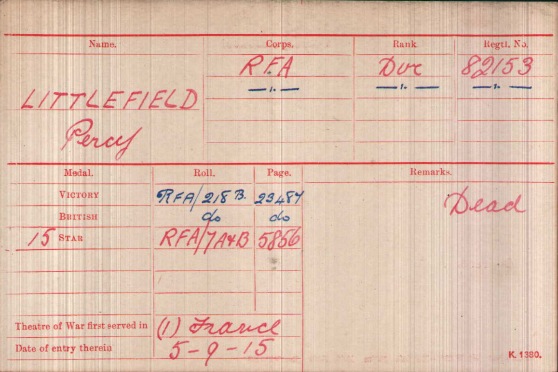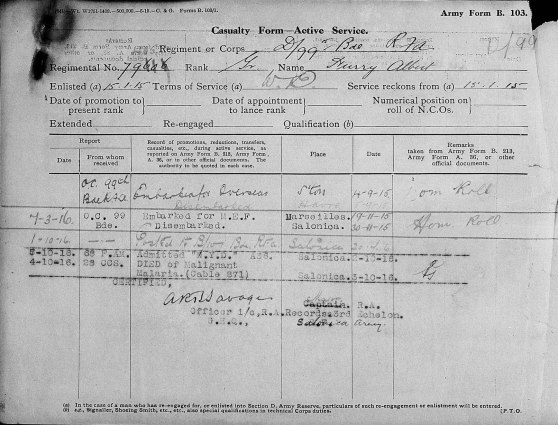


Among the legions of labourers, storekeepers, clerks and box factory workers, not to mention the odd pawnbroker’s runner and rent collector that make up the occupations of the Summerstown182, Percy Littlefield’s job sounds rather pleasant and idyllic. Living at 25 Maskell Road in 1911, the fifteen year old was working as a ‘Cricket Field Horse Driver’. Visions of the young Percy pulling a huge roller across manicured turf on the banks of the Wandle soon come to mind. Certainly the cricket scene was flourishing at this time, Reverend Robinson’s team at St Mary’s captained by William Ibbott having secured the use of Hugh Stevenson’s ground on Riverside Road. Could some of the sports facilities so evocatively captured on the Pathe footage of the Summerstown Works Box Factory recorded in the 1930’s be the same grounds once maintained by Percy Littlefield? Certainly they were just a stone’s throw from his home on Maskell Road, now submerged by the Burtop Road Estate. If not there, then perhaps he looked after the cricket fields on the vast tract of land on the east side of Garratt Lane, where the Holloway Brothers later constructed the Magdalen Park Estate but which still today contains playing fields used by the likes of the Spencer Club and Battersea Ironsides.

Percy was still a driver when he died of malaria five years later in what is widely acknowledged as one of the most hellish theatres of the First World War. Salonika had its share of fierce fighting, but it was the flies and mosquitoes there that accounted for more lives. He would have worked with pack-horses and mules, carting ammunition around for the 101st Brigade Ammunition Column, part of the Royal Field Artillery. He is buried in Lembet Road Military Cemetery, in Thessaloniki, now the second biggest city in Greece. Along with Francis Baker from Smallwood Road and Ernest Matcham from Worslade Road, he is one of three of the Summerstown182 who rest on Greek soil.

Charles Littlefield was born in Hampshire in 1857. He came to London and married Elizabeth Parsons in 1878 and three years later, they were living in Kate Street, Streatham where he worked as a gardener. Elizabeth died in 1886 and four years later Charles married Alice Annie Palmer in West Dulwich. By 1891 they were living in West Norwood with two children. Shorly after this they must have come to Tooting as records show the children being baptised there. Tragedy befell the family again in 1898 when Percy’s mother Alice died aged 39, very possibly in childbirth. He was only two years old. In 1901 the family resided at 14 Foss Road, on a stretch known as Sirdar Terrace, another address which no longer exists. Percy was the second youngest of five children. Albert 13, Charles 10, Alice 7, Percy 5 and Herbert 2. Their father was now a groundsman at a golf club, he was widowed but also present was ‘housekeeper’ Eliza Bootham from Salvador, Tooting Broadway who would appear to have been ‘Mrs Littlefield’ in all but name. By 1911, Charles, Percy and Herbert were all still at home, living in a three room property at 25 Maskell Road. Dad Charles was now listed as a general labourer. Percy’s sister 17 year old Alice was boarding at 789 Garratt Lane in the home of the Fitzjohn family. That house does still exist at the end of Keble Street opposite the garage. She had a job as a laundry hand and certainly there were plenty around here to choose from.


Percy’s younger brother Herbert was conscripted just before his eighteenth birthday in 1916. He served as a messenger with No1 Reserve Horse Transport Regiment, part of the Royal Army Service Corps. His records rather amusingly note that he was once punished for ‘entering a public house contrary to orders’. Naughty boy. Herbert married Elsie Edwards in 1920 and he died in Essex in 1976, aged 78. Percy’s sister Alice married James Sturgess and lived at 25 Maskell Road until the houses were irreparably damaged when the Wandle flooded in 1968. It would be on the right hand side in the above photograph. She is listed there in the 1969 electoral roll with one of her children Jean, two doors along lived two of her other children, Peter and Joyce. Another remarkable example of a Summerstown family’s long-term connection to a particular area. Alice died in 1971 aged 78.

The Surrey Recruitment Registers show that Percy joined up in Kingston on 9th February 1915, aged 19. He was five foot five, with brown hair and hazel eyes. He now gave his occupation as a carman, which would have continued his involvement with horses. He may have driven a tram or been employed by a railway company or removal firm for local deliveries and collections of goods and parcels. Perhaps the modern day equivalent would be a van driver. Percy’s service records have not survived but Chris Burge has attempted to put together an idea of his movements by studying men with similar service numbers. His medal card indicates that he was sent to France on 5th September 1915. One soldier who served in a Royal Field Artillery unit which was part of the 22nd Division which went to France on that date, was an Albert Hurray from South Wimbledon. Having arrived in Le Havre from Southampton, his service papers show that he then moved on to Salonika, departing from Marseilles on 19th November 1915. Hurray was later transferred to 101st Battery in July 1916, the unit that Driver Percy Littlefield would work to supply with firepower. They were there at the request of the Greek government to defend against Bulgarian invasion and remained there until 1918. The mountainous terrain in Salonika meant that the use of horses and wagons was often impossible, so supplies were usually carried by pack animals like mules. The likes of Percy Littlefield would have been charged with working with these, his experience of pulling his roller over the Summerstown cricket green would have held him in good stead for leading mules laiden with supplies up to the front line in the Macedonian mountains.

A most tragic coincidence is that Albert Hurray and Percy Littlefield would suffer the same fate and die of malaria on the same day. The nineteen year old from Milton Road is buried in Karasouli Cemetery which is where Ernest Matcham also rests. Albert Hurray’s papers are marked ‘died of malignant malaria 3/10/16.’ This was one of the very worst human infectious diseases and one that could kill within hours. Its estimated that 40 per cent of the soldiers who fought or served in this Balkan theatre contracted malaria. Conditions were appalling, freezing cold in winter and searing heat in the summer months. Salonika was surrounded by marshes and the valleys of the Vardar and Struma rivers were breeding grounds for mosquitoes. Barbed wire defences had been set up around the city which subsequently led to its being called ‘The Birdcage’. In 1916-17 there were half a million British, French and Serbian troops in Salonika when a malaria epidemic broke out in the town. By the end of the campaign more than 10,600 British soldiers had died in Salonika, more as a result of disease, than from bullets or shells. Soldiers were given a daily dose of quinine and wore muslin veils under their tin hats at night but by the end of the war an estimated 480,000 cases of the disease were reported.

In the 1700’s it was discovered that quinine could be used to prevent and treat malaria. British officers in India in the early 19th century took to improving the bitter taste by adding a mixture of water, sugar, lime and gin to make it more palatable. Thus was the gin and tonic born and Winston Churchill famously declared, ‘The gin and tonic has saved more Englishmen’s lives, and minds, than all the doctors in the Empire’. Sadly, there were no G&Ts on hand in Salonika for young Percy but the next time you are in Tooting Market and kicking back with a Graveney Gin, do be sure to raise your copper pot to the memory of the Cricket Field Horse Driver from Maskell Road.

Chris has identified the war diaries of the 101st Brigade Royal Field Artillery and the 101st Divisional Ammunition Column in the National Archives in Kew, they haven’t been digitised yet and are still in their original paper form. We will be organising a trip there soon for some of the Friends of the Summerstown182 to see if we can learn any more from them about conditions in Salonika or any other clues to Percy’s fate.
Many thanks to Chris Burge and Sheila Hill who have researched Percy and are trying to make contact with his family. In the meantime, an excellent picture of Salonika is painted by Kate Jarman in this post on the National Archives blog.
http://blog.nationalarchives.gov.uk/blog/my-tommys-war-mules-and-malaria/